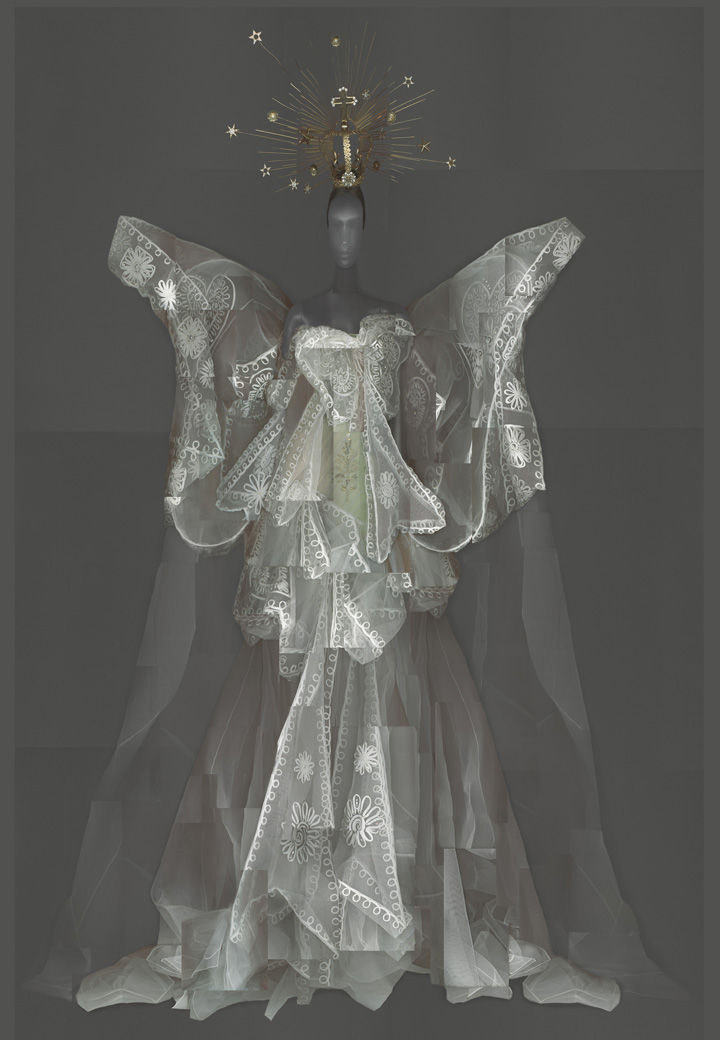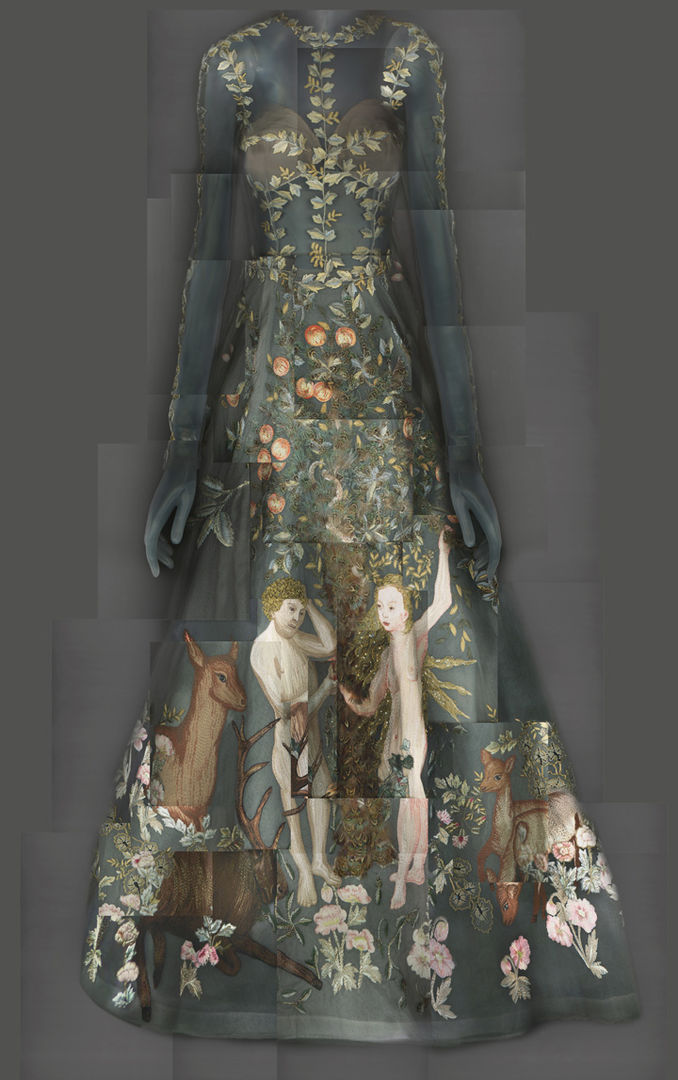Rocking frocks
“Heavenly Bodies” mixes metaphors at the Met
Its curators hope that the blend of high-fashion and RomanCatholic artefacts is “simply divine”. But divinity is not so simple

Prospero
May 24th 2018by P.W. | NEW YORK
TWO diverging meanings of “divine” underpin “Heavenly
Bodies: Fashion and the Catholic Imagination”, at the Metropolitan Museum ofArt. This, the largest show in the history of the Met’s Costume Institute, and
one of the biggest at the Met overall, is in large part “just divine,
dahling,”—an exuberant and luscious treat. In contrast, the rare loan of some
40 ecclesiastical garments and objects from the Sistine Chapel Sacristy at the
Vatican—all “dedicated to worship”—are divine in the traditional sense. To
unite these two meanings is the goal of Andrew Bolton, the exhibition’s
curator.
The hint that this was an over-reaching ambition was there
from the start, with the organiser’s repeated references to taking a tour of
the show as going on a “pilgrimage”. Of course the two meanings of divine can
merge, and often do, when High Mass in performed in a magnificent cathedral,
for example. Other denominations can achieve this, too, as was evident in
Windsor at the royal wedding. “Heavenly Bodies” is drawing crowds for good
reasons. The show’s production values alone are sensational, with columns of
mannequins in golden dresses hanging suspended from the museum’s high ceilings
and a very great deal more. But it never does quite marry the two divines. The
Vatican loans include the silk- and gold-embroidered mantle of Pope BenedictXV; the embroidered and gem-embellished mitre of Pope Leo XIII; papal rings and
pectoral crosses; and most extravagant of all, the tiara first worn by PopePius IX for Christmas mass at Saint Peter’s Basilica in Rome in 1854. It is set
with 19,000 precious stones, most believed to be diamonds. More down to earth,
literally, but for some perhaps also more touching, are the traditional red,
slip-on shoes worn by Pope John Paul II only 20 years ago.
The Vatican was astute in insisting that its loan be
displayed apart from the fashion show. It may be  ironic that the underground
Costume Institute became the setting for its copes, chasubles and dalmatics—all
liturgical vestments. In fact this works in their favour. The otherwise bare
rooms allow contemplation for those who seek it.
ironic that the underground
Costume Institute became the setting for its copes, chasubles and dalmatics—all
liturgical vestments. In fact this works in their favour. The otherwise bare
rooms allow contemplation for those who seek it.
The vastly larger parade of high-fashion outfits spreads
across the main floor’s Byzantine, Medieval and Renaissance art galleries. It
carries on in the chapels, galleries and gardens at the Cloisters branch of the
Met some eight miles north. Upstairs and uptown, razzle-dazzle and glamour with
forays into exhibitionism prevail. There are frocks and gowns that incorporate
imagery of the Roman Catholic religion including crosses by the score, as well
as densely sequinned frocks by Versace and Dolce & Gabbana which portray
the Virgin Mary and infant Jesus. There are riffs on the clothes of parish
priests, cardinals and bishops; high-fashion angels look down on the crowds of
visitors from the top of arched doorways.
Clothes for men make an appearance too. At the Cloisters,
for example, a mannequin becomes a designer monk when robed in a hooded brown
wool ensemble by Rick Owens, an American fashion designer. It incorporates a
protruding open tube (of the same fabric) at crotch level. Lest the viewer’s thoughts
dart to the Church’s paedophilia scandals, the caption directs attention to the
bawdy characters in Chaucer’s “Canterbury Tales”—written in the safely distant
14th century.
A particularly disconcerting display, also at the Cloisters,
goes one metaphor too far. A mannequin outfitted in a lavish white-silk couture
bridal gown stands alone before a chapel altar. “Ave Maria” plays on a loop.
There is no groom visible; it would be a a fashion show’s culminating coup de
theâtre; here it is a fashion exhibition’s coup de grâce. This pretty image,
instead of uniting the meanings of divine, mixes up two often life-changing
sacred rites and appears to diminish both. Poverty and chastity are among the
vows taken by nuns, decidedly not those sworn by couture-clad brides in church
marriage ceremonies.
In one of the catalogue essays that provide the intellectual
underpinning for this exhibition, David Morgan, a professor of religious
studies at Duke University, writes that the “robes, mantles and tunics in which
saints appear...make the body the material manifestation of spiritual virtue.”
While there is plenty of Catholic iconography in the clothes on view at the
Met, the spiritual is absent, almost but not quite entirely: A Jean-PaulGaultier evening dress has a red beaded heart on the left breast, pierced with
a sword. From this a rivulet of red silk falls to the floor. Unlike so many
other pieces with crosses and such looking merely ornamental, it is exceedingly
moving—a work of art. So too is the opulent, pale silk gown by Balenciaga
constructed with only a single seam. Both have something divine about them in
both senses of the word—as indeed does that bling tiara worn by Pius IX.
Alas, for the aims of Mr Bolton, these are rare exceptions.
Overall, the attempt to merge the two meanings of divine flops—sometimes
painfully. For those who simply want to enjoy a fabulous theatrical display,
the show is downright infallible.

